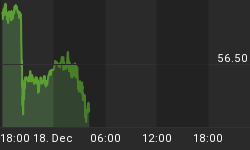Trend Watch has been transformed into a web-based member site service not just a newsletter. Below is the latest weekly update posted on the member site. There are a lot more of information in the member site including the daily signal reading posting which has never been released before and much more. If you would like to take a look at what the new member site looks like, please click here. Once you are redirected to the Trend Watch main page, click on the subscriber login icon and enter "guest" for both username and password. This guest account will be only available for 1 week (1/24 to 1/31).
1/21/06 Weekly Update
Let's talk about the losing streak of WATTS. Historically, the longest losing streak of the WATTS signal is 3 ( http://www.wealthanchor.com/nasdaq_signal_2003.html). That is, it's not unusual for WATTS to lose consecutively for 3 times. The current BUY signal doesn't look good and may lose or get stopped out. That would be the first consecutive losing signals since WATTS went live. We are not surprised to see that but we really don't like it, especially when WATTS has lots of followers.
In last weekly update, we pointed out that our internal technical indicators indicating that the market was overstretched on the upside and we were expecting a short-term correction. The correction did come but in a kind of dramatic way. The recent market seems very choppy and makes WATTS swallowing its possible second losing signal in less than a month. It's kind of like a Deja Vu to us.
Let's fast backward to the beginning of year 2003. After a series of long declines since year 2000, the market was in a very choppy mode and caused WATTS lose 3 times in a row in the first 3 months of 2003. It may just be a coincidence. Now, we are in the beginning of year 2006. After a series of long advances since year 2003, the market again, is in a choppy mode and makes WATTS start its losing streak.
Does it mean that while the market is gradually making a long-term trend reversal, the internal and unseen market forces would conflict, act, and squeeze with each other in a very inharmonic manner and in that particular transition period, WATTS would be fooled and can't recognize the underlying trend force correctly because there is no monolithic shorter-term trend force existing during the period?
This is a big theory waiting to be proved. We'll continue to review this issue in next few months.
Another important thing to notify subscribers is that we are going to implement a new component into WATTS to make it more profitable. We never stop the efforts trying to improve WATTS. The research of the system is an on-going project inside the company. The new component is our internal technical indicator matrix (ITIM). We've been cross-verifying the ITIM with the WATTS system behavior for a long time. As of now, we conclude and believe that this study has some value and adding the component to WATTS can contribute something to the system.
WATTS will still be WATTS. Nobody or nothing can change that. From the study, however, we found that the quality of the WATTS signal does have a high correlation of the ITIM. To make our point more clear, when the WATTS signal and the ITIM are saying the same thing, the winning probability would rise significantly in terms of a profitable signal as well as the profit itself. When they are not in tandem, the winning probability would remain the same average level and the profit would be significantly lower.
In the future, the WATTS's signal will remain the same but the system will adjust the position % on the trade vehicle according to the new component. It won't be always 100% position holding as it did in the past. The percentage could be from 0% to 200% depending on the ITIM. For example, when the system spawns a 0% BUY/SELL signal (it could be), the ITIM is basically canceling the WATTS signal because the signal could be a very poor-quality one and the probability of losing money in this signal is very high. The historical data backtesting would of course be available for subscribers to review and to see the difference when the system improvement is done.
WATTS is a pure mathematical and statistical model. How to integrate a technical indicator system seamlessly into such a model would be a headache to us. But we will make it happen by all means. Please do remember that there is no perfect system in the world. Every system no matter how good it is, loses from time to time. Our improvement doesn't mean that WATTS will become invincible. We just try to make it a little better than now.
Finally, we want to point all subscribers to reading the latest FAQ. One subscriber made an interesting suggestion that WATTS should employ a dynamic stop loss system instead of a static system like the current 4% stop loss price the system sets. It's a good question and we encourage all subscribers to find out our answer.















